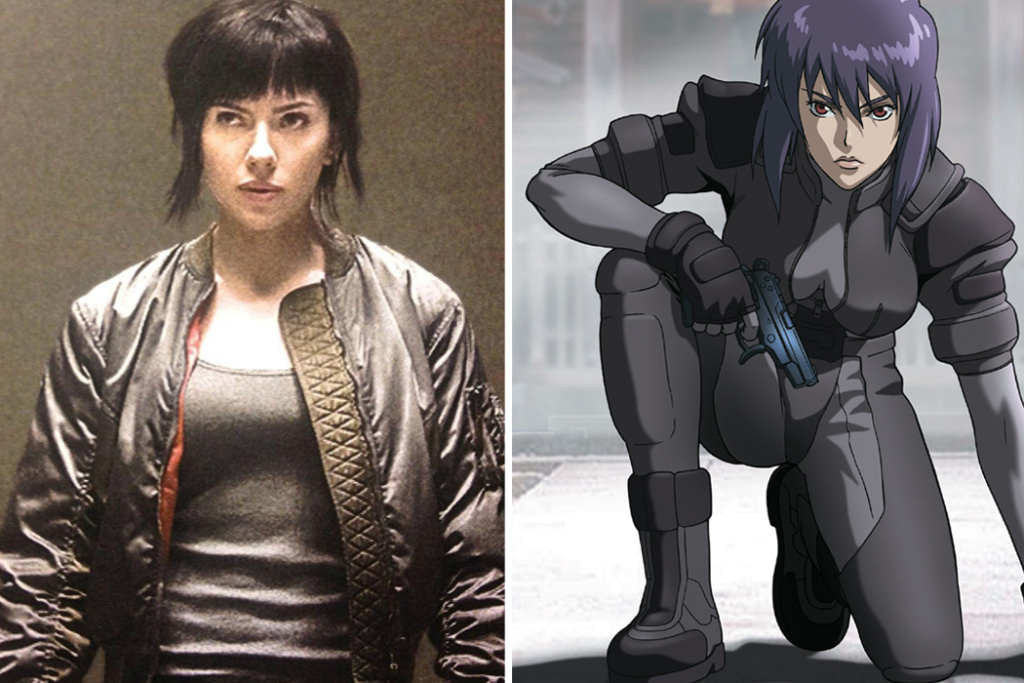Lost in Translation: Why Hollywood and Anime Don’t Mix… Yet.
Since the 1990s, anime has experienced a meteoric rise in popularity here in the United States. It’s influenced our media and created a whole new subculture within film and animation fans. Naturally, something that’s been so popular and so prevalent would be enticing to major filmmaking companies, and as such, many anime properties have been thrown around and optioned for live action major motion picture adaptations. Many have not come to pass, like the long rumored Akira or Cowboy Bebop (though the latter has recently been confirmed as an upcoming Netflix series), but others have, to rather disastrous results. Three anime have made it to the silver screen as films here in America: Dragonball:Evolution, Kite and Ghost in the Shell. Each one of these films has failed to do their source material proud for their own reasons. With the recent release of the most current anime adaptation film, Alita: Battle Angel, I believe it’s time to examine just why these three films failed, and what Alita needs to do to succeed.
The first film in question almost needs no introduction: Dragonball Evolution is not only one of the worst anime adaptations ever made, but it is also one of the worst films ever made. Evolution completely mishandles its source material in every possible way. The film is in no way indicative of the fun and heart of Dragonball, replacing the memorable characters with bland cardboard shadows of what they used to be. Much of the internal lore is changed or revised (Ki is now Airbending for example), and the film as a whole is just awful on its own terms. Evolution says in the beginning that Piccolo was a demon lord that was sealed away years ago, never to be seen again, only to in fact be seen free and roaming around on an airship not 30 minutes into the film. Plot holes and lazy writing permeate Dragonball Evolution so completely that it’s been parodied and lambasted online ever since its release.
You may think that it’s difficult to make the source material for Dragonball into a compelling live action story would be difficult, but to that I have two counterpoints. Firstly, yes it is difficult, but it is absolutely achievable, as seen in the quite well done fan film series Dragonball Z: The Light of Hope. Additionally, and perhaps more importantly is that this was an adaptation. Additionally, many forget since it’s been so long since the original anime and manga were aired and published, but Dragonball began as a martial arts comedy manga, not as the big power level scream fest that uninformed anime fans believe it to be. Dragonball Evolution tries to take more from Dragonball Z instead of its actual source material, and the film is far worse off for it. Had the film stuck to its more comedic roots, the film might have been received better, with genuine laughs instead of unintended ones. Dragonball Evolution was not the first live action anime adaptation, but it most assuredly was the worst.
Kite: Anime vs. Live Action
The second live action anime adaptation I’d like to bring to your attention is 2014’s Kite, based on the 1998 anime of the same name. This film is notable for co-starring Samuel L. Jackson… and not much else. To be honest with you all, I attended a free screening of this film one year at Otakon, but I left after thirty minutes of viewing. Keep in mind, this was a FREE SCREENING, and I left early. Kite is an anime following a girl named Sawa, whose parents are murdered at a young age. She is taken in by a detective who helps her to hunt down and kill those who killed her parents. The film’s plot is roughly the same as the anime, so that should make it good, right? Well… no. Kite was originally a one-shot anime OVA that only runs for about 45 minutes to an hour if you’re watching the unrated cut. The film takes that and stretches it out to a laborious 90 minutes, which makes everything feel like time is being wasted. Samuel L. Jackson is very underutilized as Karl Aker, Sawa’s handler in the film. It’s to be expected since the production probably couldn’t afford to keep him on set for too long.
Kite: Metro shoot up scene. Courtesy of Laci Kovács
Ultimately, Kite’s biggest failing as a film adaptation is that there’s just not enough substance to the original source material that it can support a full feature length endeavor. That and the most memorable things about the original anime is its ultra-violence and a few particularly disgusting scenes that were cut for very real taboo reasons. Honestly, I’m very confused as to why this property was chosen and actually put into production over so many more worthy anime and manga.
Scarlett Johansson (L) plays Motoko Kusanagi (R)
Finally, we come to the most recent anime adaptation before Alita: Battle Angel – 2017’s Ghost in the Shell, based on the now iconic 1995 anime film of the same name. The live action film was practically marked for death before it even entered theaters, garnering massive controversy for casting Scarlett Johansson as Motoko Kusanagi (the main character), a cyborg detective in a futuristic Japan. The outcries of white-washing drowned out actual discussions on the film which was universally praised as “okay”. I myself never saw the film until researching this article and let me tell you, calling this film “okay” is probably being generous. The film struggles to find an identity throughout its runtime, trying both to retell the original anime film’s story while also telling a unique one exclusive to this film. The new plotline involves Motoko - called Mira Killian for most of the film - adjusting to her life as the first fully robotic human, with only her brain left from her original self. She grapples with her own humanity while seeing “glitches”, fragments of her old life that she can’t seem to remember while hunting down a cyber-criminal named Kuze, ostensibly the same character as The Puppet Master from the original film. When Ghost in the Shell is focused on these new, unexplored aspects of the world and of Motoko’s life, the film is almost compelling. Unfortunately, Scarlett Johansson’s stilted, robotic acting prevented me from getting too invested, and then there’s the matter of the repeated scenes.
Ghost in the Shell (1995) -Jump Scene - Courtesy of jackson ahkila
The 1995 Ghost in the Shell’s impact on modern film culture cannot be overstated. It along with AKIRA popularized anime as a medium where more serious stories could be told, and it is very much responsible for the enduring popularity of the genre as a whole. Ghost in the Shell directly inspired the Wachowski siblings (formerly the Wachowski Brothers) to create the Matrix film franchise, and it influenced James Cameron, propelling him to go on to produce Alita: Battle Angel. All this said, you can see why the film adaptation would want to lean into remaking the scenes that people loved in the original. Yet, when this is done, all that it accomplishes is reminding me I could be watching a better film. Part of what made the original Ghost in the Shell so awe-inspiring is that it was animated, and so many of the eye-catching and iconic scenes like the Major turning invisible after jumping off of a skyscraper or her fight with a giant spider tank are so impressive because it was all done with hand-drawn animation, all the care and love leaping off the screen with every frame. I’m not trying to disparage 3D animation here, as I know firsthand how much love and care goes into it, but in the modern age of film that we live in, good CG is nowhere near as impressive as it used to be. In fact it’s expected, so seeing everything recreated in CG feels hollow, and nowhere near as powerful as the 1995 anime.
Anime Battle Angel Alita - . Alita / Gally Saves Dr Ido from some brain eaters. Courtesy of BattleAngelCosplay
So, with all of that said, what does Alita: Battle Angel need to do to be successful? Well, if it’s to learn from the failures of those that came before it, it needs to do three things. One, it needs to be a faithful representation of the source material. Two, it has to be compelling and use the actors and talent behind the screen it has well. Three, if it’s doing something new, then make sure to stick with it – don’t retread old ground. Can it be done? Well, if reviews are to be believed, perhaps!
So far, audiences have both been praising the film for its over the top action, beautiful visuals and strong female lead in Rosa Salazar’s Alita; Yet others have called the film tonally inconsistent and struggles to find its own identity or create concrete motivations for its characters. No matter what side of the fence you fall on, Alita: Battle Angel is doing something no other anime film adaptation’s done before: it’s inspiring discussion. Every single other Hollywood anime adaptation up until this point has been dismissed as bad, or worse, mediocre. No one’s ever given a second thought to films like these, until now. There’s a full on discourse surrounding this film, much like any number of modern films! So love it or hate it, Alita: Battle Angel has to be doing something right.





